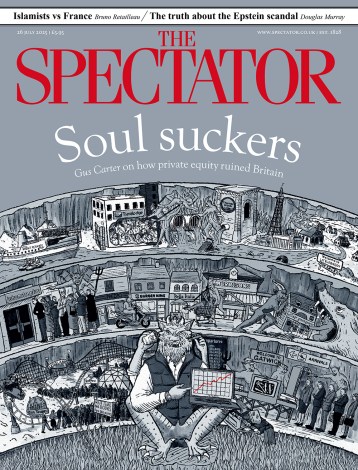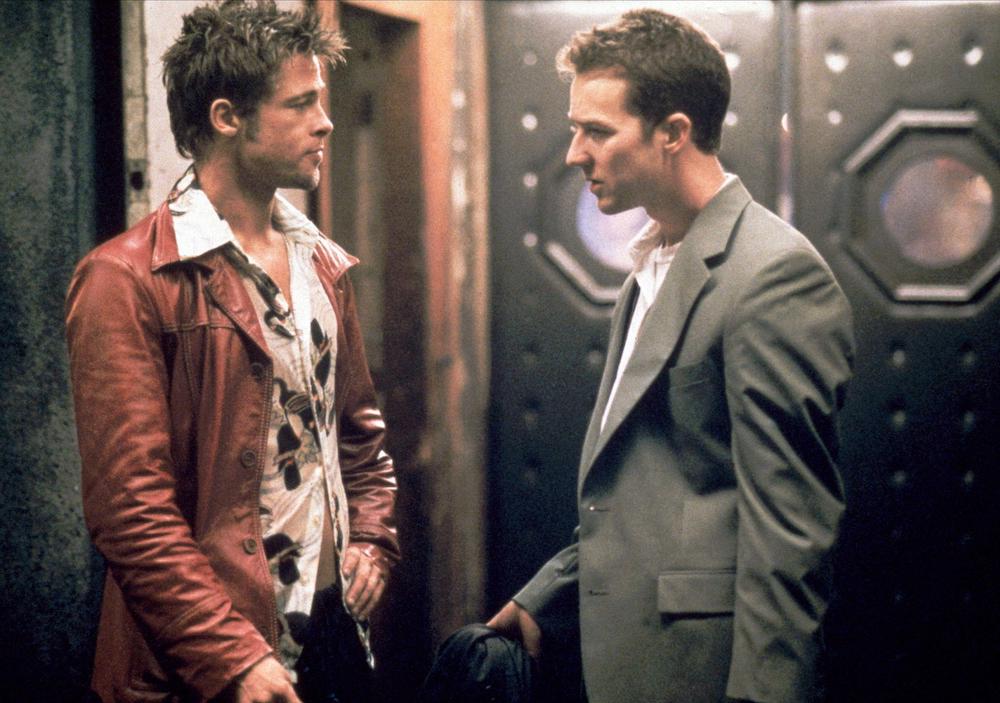There are three great makers of popular man-art working in Hollywood today – Michael Mann, Christopher Nolan and David Fincher – and all three work with broadly the same materials: male identity, its associated violence, and post-industrial societies with no place for either. Mann’s neon-noir aesthetic focuses on status, whether James Caan’s safecracker in Thief, with his $150 slacks, silk shirts, and $800 suits, or Jamie Foxx in Collateral, who dreams of running his own limo firm, but only idly, having long since sunk into his reassuring routine as night-time cab driver.
Nolan’s theme is personal darkness, whether Christian Bale’s Bruce Wayne in the Dark Knight trilogy, or Al Pacino’s sleepless LAPD detective in Insomnia. Fincher is the coldly clinical student of obsession, and his all-American-boy leads – Brad Pitt in Seven, Jake Gyllenhaal in Zodiac – become so consumed by their pursuit of evil that they lose themselves and those around them. With all three directors, male antiheroes spend long enough staring into the darkness that they eventually see themselves.
In Fight Club, which is marking the 25th anniversary of its release, Fincher crams all these themes into two of the most stylish hours of moviemaking the 1990s produced. Adapted from the novel of the same name by Chuck Palahniuk, Fight Club follows Edward Norton’s narrator Jack, whose corporate job involves helping a major car manufacturer limit liability whenever one of its faulty automobiles wraps itself and an unsuspecting family around a tree. Jack is an insomniac who can attain emotional release only by sneaking into group therapy and feeding off the pain of strangers. He meets Tyler Durden (Brad Pitt), a cool, charismatic anarchist who describes himself as a soap salesman but who also works as a movie theatre projectionist, splicing single frames of porn into family flicks, and as a hotel waiter, where he adds various bodily fluids to the culinary fare. (Don’t order the creme of mushroom soup, whatever you do.)
After Jack’s apartment explodes in a fireball, he moves in with Tyler into a dank, grimy house that appears to have taken interior design tips from the toilet scene in Trainspotting. After a late-night parking lot punch-up, the pair give birth to Fight Club, an underground network of amateur boxing societies where lost and directionless men pummel one another bloody just to feel something. The first (and second) rules of Fight Club are: ‘You do not talk about Fight Club,’ but someone must be blabbing because soon attendance is swelling like a haematoma and members recognise one another around their unnamed city from the cuts and bruises that embellish their freshly invigorated faces. Tyler has bigger plans in mind, though. He is not just giving bored suits an outlet for their frustrations. He’s building an army for Project Mayhem, a campaign of corporate sabotage that culminates in a plot to blow the financial district to smithereens. The twist, which is ungimmicky and grows naturally from the story, reveals Jack to be a decidedly unreliable narrator.
Published in 1996, Fight Club became a staple of late 1990s male culture, echoing the disaffection of that generation as On the Road and Catcher in the Rye did the generation before. The novel bounced around in many an adolescent school bag and on many an undergraduate reading list. It may even have been cracked open on occasion. Fight Club landed at just the right time, as leftish sentiment found new, post-Soviet expression in smash-a-Starbucks anti-globalisation and disdain for corporations and consumers alike. Jack is the apogee of conspicuous consumption and rebel against it. Early in the movie, he scans his apartment as though flipping through the Ikea catalogue – under 30s, ask your parents – and when the unit is blown up, he mourns his prized possessions (a stereo and high-end clothing) with a sigh: ‘I was close to being complete.’
This theme is made explicit in a rallying cry Tyler delivers to the Fight Club:
Advertising has us chasing cars and clothes, working jobs we hate so we can buy shit we don’t need. We’re the middle children of history, man. No purpose or place. We have no Great War, no Great Depression. Our great war’s a spiritual war, our great depression is our lives.
It was snappy dialogue in a movie but it was also a cultural red flag that all was not well with American men.
As a piece of filmmaking, Fight Club is an intimate spectacle of violence unrepressed, a bone-crunching bromance between a desk-bound corporate soy boy and the ripped uber-mensch he longs to be. It is told with a stylistic strut that is satirical and sexy, largely thanks to career-defining performances by Norton and Pitt, but it is Fincher’s relentlessly curious camera that digs below the surface into the psychology of Gen-X male disaffection. Commentary in 1999 was less focused on Fight Club’s cinematic qualities than its perceived politics. The Chicago Sun-Times’ Roger Ebert called it ‘macho porn’ and ‘the most frankly and cheerfully fascist big-star movie since Death Wish’, a sentiment echoed by the New Yorker’s David Denby, who deemed it ‘a fascist rhapsody posing as a metaphor of liberation’.
The movie invites liberal scorn with its protagonists who fetishise physical strength, find purpose in organised violence, and conclude that ‘losing all hope was freedom’. There is an unmistakeable echo of Zarathustra’s instructions for building a race of supermen: ‘Surpass, ye higher men, the petty virtues, the petty policy, the sand-grain considerateness, the ant-hill trumpery, the pitiable comfortableness, the “happiness of the greatest number”. And rather despair than submit yourselves.’ Milling around in the subtext along with Nietzsche is a seemingly anti-feminist outlook. Fight Club is obsessed with emasculation. The punishment for attempting to obstruct Project Mayhem is castration. Jack’s favourite therapy group is a weekly gathering of testicular cancer survivors called ‘Remaining Men Together’.
The only female character of any consequence, Marla Singer (Helena Bonham Carter), is a fellow ‘tourist’ who gatecrashes support groups but her presence inhibits Jack’s ability to get satisfaction from the meetings. Women as thieves of manhood is hinted at in a bathroom conversation between Jack and Tyler about their fathers, with Tyler remarking: ‘We’re a generation of men raised by women.’ Some critics read a homoerotic sadomasochism into the basement beating sessions. They can just as easily be interpreted as a substitute for the authoritarian patriarch, a figure they were denied by social and industrial changes that put women at the head of the American family and men behind neat desks in tiny cubicles in air-conditioned offices.
Fight Club was a rare piece of pre-9/11 entertainment to signal that history had not ended
Fight Club is in a proud tradition of men’s movies that provoke hysteria among critics and the liberal intelligentsia more widely. The fear that Tyler Durden might turn young males fascist belongs to the same elite paranoia that thought Patrick Batemen would be the model for a new generation of preppy misogynists and Arthur Fleck would inspire MAGA-hatted incels to go on shooting sprees. Liberals will always freak out over movies that have something to say to men because, if the movie understands men, what it has to say will not be liberal. It doesn’t follow, however, that Ebert and Denby were right and that Fight Club is a Gen-X Triumph of the Will. As the critic James Berardinelli argues, Tyler’s followers are ‘victims of the dehumanising and desensitising power of modern-day society’ who have ‘become cogs in a wheel’ and can only ‘regain a sense of individuality’ by ‘getting in touch with the primal, barbaric instincts of pain and violence’. Reviewing the movie in Time, the late great Richard Schickel said that it spoke to ‘that illiberal, impious, inarticulate fringe that threatens the smug American centre with an anger that cannot explain itself’. These takes get closer to what the movie tries to articulate than the implication that David Fincher is secretly a Nazi. Fight Club is a diagnosis, not a manifesto.
Its diagnosis was far-sighted, teasing out ideas and cultural shifts that were unformed or contested back then but that are well-established now: tat masculinity has been left battered and bruised by constant critique, deconstruction and vilification; that therapy is too conceptually feminine to address men’s mental health; that sidelining or suppressing masculinity only elevates the worst kind of men, whether Tyler Durden or Andrew Tate. For fight clubs, read the message boards and group chats to which men’s social lives, opinions and humour have been banished. For Project Mayhem, read the rise of populists left and right and electoral insurrections against a remote elite. For the basement-dwelling malcontents of Clinton’s America, read the deplorables, alt right, groypers and very online trads of Biden’s America.
Fight Club was a rare piece of pre-9/11 entertainment to signal that history had not ended and that democratic liberal capitalism was not as secure as its advocates assumed. Its endurance, however, is not down to its prophetic themes alone. David Fincher’s mastery of the form, and his talent for making the subconscious visual, explains the movie’s longevity. He made a compelling, unsettling piece of cinema that continues to compel and unsettle today.








Comments